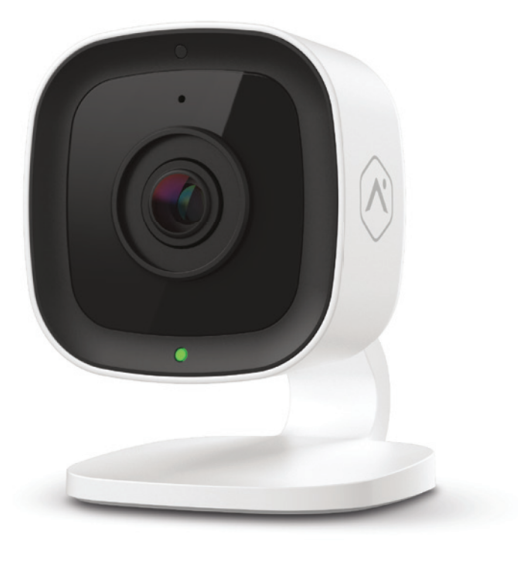SkyBell Camera Streaming for PROA7PLUS in Beta Development
Posted By Michael GorisIn a previous Beta Firmware Version available to industry insiders, Resideo introduced the ability to live-stream SkyBell Doorbell Cameras from the Honeywell Home ROA7PLUS and Resideo PROA7PLUSC. The new upcoming feature will likely be made available to the general public very soon.
We have known about the camera streaming capabilities for the PROA7PLUS for quite some time, but we had yet to see what form the feature would take. That changes with this beta release, as we now have our first glimpse at the feature. Users can live-stream any Total Connect 2.0 compatible SkyBell device right from their PROA7PLUS or PROA7PLUSC. Compatible doorbell cameras include the round Honeywell SkyBell DBCAM and the slimline Honeywell SkyBell DBCAM-TRIM. The round model has since been discontinued, but the slimline model remains available for purchase from the Alarm Grid website.

In addition to streaming from a compatible panel, the system will also display a message whenever someone is at your door and rings the SkyBell device. The camera streaming also includes audio streaming, and you can engage in a two-way voice conversation with the person at your door. This is thanks to the integrated microphone included in the ProSeries Security Systems. This is great for telling your friend that you will unlock the door for them, or for telling a solicitor that you're not interested. The possibilities will be endless!
And not only is this feature available for the PROA7PLUS and PROA7PLUSC, you can also stream from the compatible touchscreen keypads, those being the Honeywell Home PROWLTOUCH Keypad and the Resideo PROWLTOUCHC Keypad. The touchscreen keypads support all of the same capabilities as the panels in this aspect, including doorbell camera streaming, audio streaming, and two-way voice. Remember that you must have WIFI capability enabled on the panel to integrate the touchscreen keypads as well as the Skybell.

One very important note about the SkyBell streaming feature is that it is only going to be supported by the "PLUS" versions of the ProSeries Panels, those being the PROA7PLUS and the PROA7PLUSC. It is our understanding that the PROA7 and PROA7C will not support the feature. If you were trying to decide between a "PLUS" and a "non-PLUS" version of a ProSeries System, well this is yet another reason to spring for one of the higher-end versions!
Although the feature has not been released to the public quite yet, we still have a general idea of how SkyBell Camera streaming will be implemented. First, you must have the system monitored and set up for service with Total Connect 2.0. You will then need to link your SkyBell device with your Total Connect 2.0 account. If you intend on buying a new SkyBell Camera for this purpose, then make sure that you are getting one of the Honeywell models for use with Total Connect 2.0. A user should never attempt to pair an Alarm.com SkyBell device with TC2 or with the native SkyBell App. After you link your ProSeries System with TC2, there will be a new Cameras option inside the main system menu. It is there that you can choose to stream a SkyBell Camera linked with your TC2 account. The device should show up after the doorbell camera has been successfully integrated with your TC2 account, and the panel has properly refreshed with the AlarmNet Servers.
We know that many Alarm Grid users will certainly take advantage of this feature once it is released. To ensure that you can get started with SkyBell Camera streaming as soon as it becomes available, make sure that you are monitored ahead of time. All TC2 users are entitled to have up to five (5) SkyBell devices linked with their accounts. You don't even need a true video monitoring plan to get started. More information on the subject can be found in this FAQ. If you're interested in signing up for monitoring service, and you haven't decided on a service provider as of yet, then you could consider one of Alarm Grid's monitoring plans. If you have questions, reach out to us by emailing support@alarmgrid.com. Remember that we check and reply to emails during our usual business hours of 9am to 8pm ET M-F.
Are you excited about SkyBell Doorbell Camera streaming for the PROA7PLUS, PROA7PLUSC? We're sorry to tease you with a feature that hasn't seen its official release quite yet, but we figured that it would be okay to build up some hype. With the SkyBell Camera Streaming and Local End-User Programming for the ProSeries Panels both in Beta Development, it's fair to expect the features to be fully released any time now. We will provide updates in the Alarm Grid Blog regarding any major releases. For now, make sure to comment down below to share your thoughts on this upcoming feature. Also feel free to let us know about any security system coverage you would like to see us focus on in the future. That's it for today's blog, stay tuned for more Alarm Grid content coming soon!

 As you likely know by now, the deep lineup of
As you likely know by now, the deep lineup of 






